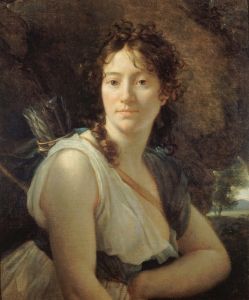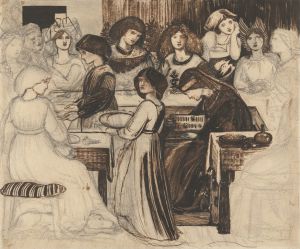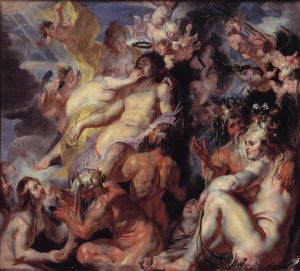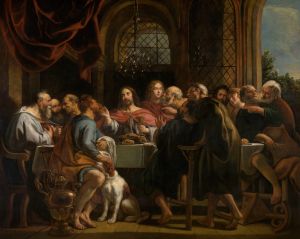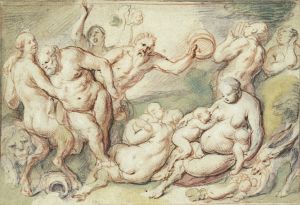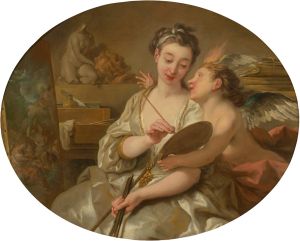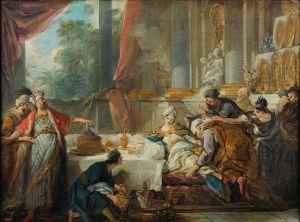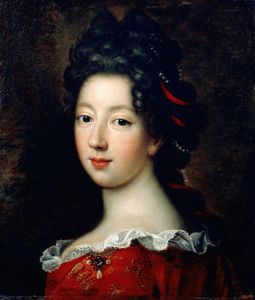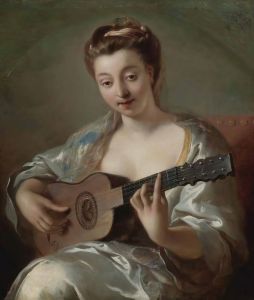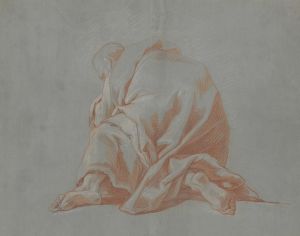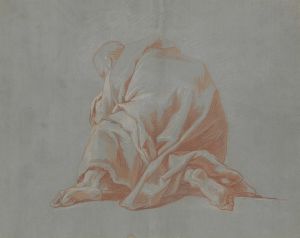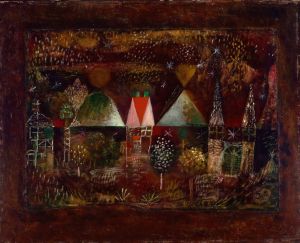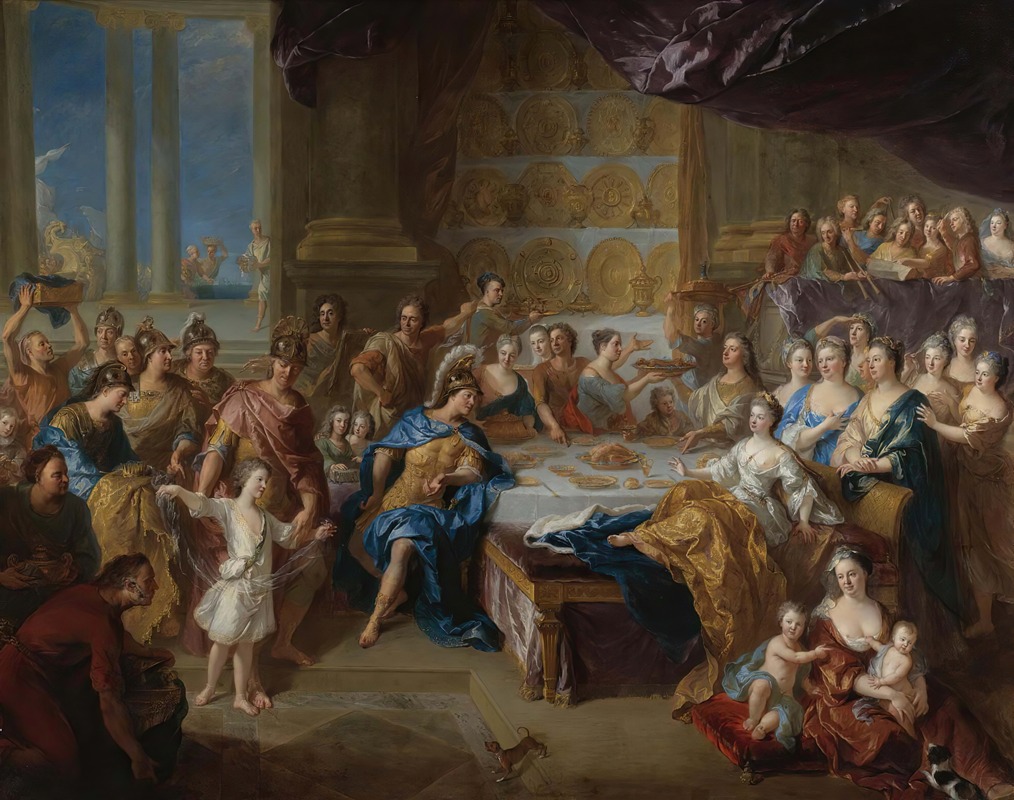
The Feast Of Dido And Aeneas; An Allegorical Portrait Of The Family Of The Duc And Duchesse Du Maine
A hand-painted replica of Jean-François de Troy’s masterpiece The Feast Of Dido And Aeneas; An Allegorical Portrait Of The Family Of The Duc And Duchesse Du Maine, meticulously crafted by professional artists to capture the true essence of the original. Each piece is created with museum-quality canvas and rare mineral pigments, carefully painted by experienced artists with delicate brushstrokes and rich, layered colors to perfectly recreate the texture of the original artwork. Unlike machine-printed reproductions, this hand-painted version brings the painting to life, infused with the artist’s emotions and skill in every stroke. Whether for personal collection or home decoration, it instantly elevates the artistic atmosphere of any space.
Jean-François de Troy's painting "The Feast of Dido and Aeneas; An Allegorical Portrait of the Family of the Duc and Duchesse du Maine" is a notable work from the early 18th century. De Troy, a prominent French Rococo painter, was known for his historical and allegorical compositions, as well as his skill in depicting luxurious and theatrical scenes. This particular painting is an example of his ability to blend historical narrative with allegorical portraiture, a style that was popular among the French aristocracy during this period.
The painting is an allegorical representation that combines the classical story of Dido and Aeneas with a portrait of the family of the Duc and Duchesse du Maine. The Duc du Maine, Louis-Auguste de Bourbon, was the legitimized son of King Louis XIV of France and his mistress, Madame de Montespan. His wife, Anne Louise Bénédicte de Bourbon, the Duchesse du Maine, was a member of the Condé branch of the House of Bourbon. The couple was known for their patronage of the arts and their involvement in the cultural and political life of early 18th-century France.
In the painting, de Troy uses the mythological story of Dido and Aeneas as a backdrop to highlight the virtues and status of the Duc and Duchesse du Maine's family. The story of Dido, the Queen of Carthage, and Aeneas, a Trojan hero, is derived from Virgil's epic poem, the "Aeneid." It tells of their tragic love affair, which ends with Aeneas leaving Dido to fulfill his destiny of founding Rome, leading to Dido's despair and eventual suicide.
De Troy's composition likely includes symbolic elements that reflect the personal and political aspirations of the Duc and Duchesse du Maine. The use of classical mythology to convey contemporary themes was a common practice in the art of this period, allowing patrons to associate themselves with the grandeur and moral lessons of antiquity. The painting would have served not only as a decorative piece but also as a statement of the family's cultural sophistication and social standing.
The work exemplifies de Troy's mastery of color, composition, and the depiction of opulent fabrics and textures, characteristic of the Rococo style. His ability to capture the elegance and drama of the scene would have appealed to the tastes of the French nobility, who valued art that reflected their own refinement and cultivated lifestyle.
While specific details about the painting's current location or provenance might not be readily available, it remains an important example of Jean-François de Troy's oeuvre and the broader artistic trends of the early 18th century. The painting reflects the intersection of art, mythology, and aristocratic identity during a time when the French court was a major center of cultural production and influence.





